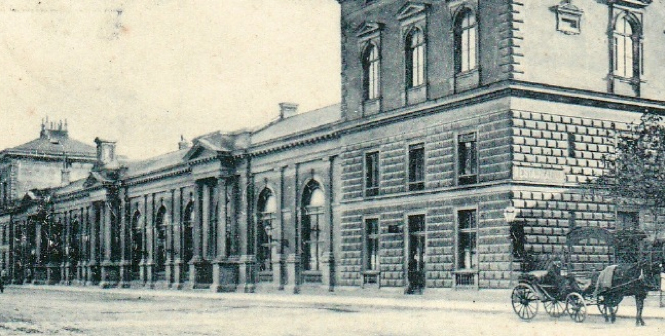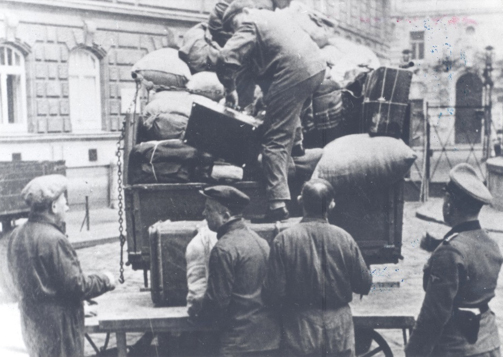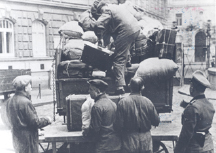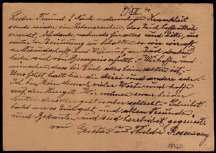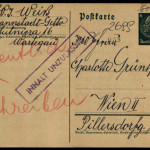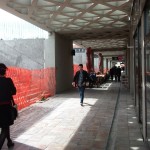POST 41 – Reports from Litzmannstadt Ghetto (english version)
Projektbeschreibung
In January 2014, work began on the project ‘POST41: Viennese Jewesses and Jews in Litzmannstadt Ghetto’ (working title). A team of Austrian and Polish researchers are devoting an exhibition in Vienna and Łódź and a memorial book to the 5,000 Jewesses and Jews, deported as part of the so-called ‘transports of western Jews’ in October and November 1941 from Aspangbahnhof in Vienna to Radegast railway station in Łódź, and from there to Litzmannstadt ghetto.
‘Post41’ is a documentation of testimonies from Litzmannstadt ghetto. The exhibition and memorial book make available to the public for the first time postcards from Viennese deportees, held back by the ghetto administration in 1941.
About 3,400 postcards written during the winter of 1941-42 to relatives, friends and neighbours in Vienna and other European cities are to be found in the State Archive in Łódź. They offer a glimpse of the desperate circumstances of deportees in the ghetto, their anxiety about relatives and friends in Vienna, and the network of social contacts that existed amongst Viennese inmates. Postcards and diaries, extracts from the ghetto chronicle as well as photos and film extracts form set pieces in the reconstruction of a story that essentially cannot be told. ‘It was an atmosphere that cannot be described. It cannot be filmed or narrated.’ (Grete Stern, born 1920. From an interview in January 2013).
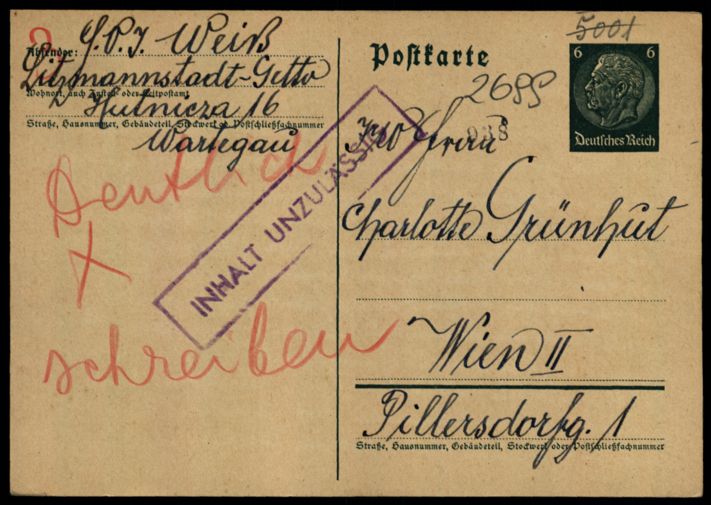 Postcard from Litzmannstadt Ghetto
Postcard from Litzmannstadt Ghetto
Deportations 1941
In October 1941, thousands of Jewesses and Jews in Vienna were summoned to ‘present themselves’ with 50 kilograms of baggage per person at local schools in readiness for deportation.
Five transports, each carrying 1,000 people, travelled from Aspangbahnhof to Łódź, Litzmannstadt ghetto between 15 October and 2 November 1941.
Many of the Viennese women and men deported in 1941 died of starvation and disease within the first few months. More than 3,000 were murdered in May 1942 in nearby Kulmhof (Chelmno) extermination camp.
In August 1944 the ghetto was liquidated by the Nazis. Survivors still living in the ghetto were taken to Auschwitz concentration and extermination camp. Of the thousands of people deported from Vienna to Litzmannstadt, only 34 lived to see liberation.
A total of 20,000 people were deported in autumn 1941 from western territories of the German Reich to Litzmannstadt ghetto. Similar projects documenting the transports from Berlin, Düsseldorf, Trier and Cologne have already been completed by German researchers.
Deportations from Aspangbahnhof, Vienna. Deportees’ luggage being loaded in Kleine Sperlgasse, Vienna, 1941.
Photo: DÖW
![]()
 Arrival of a transport from Vienna in Litzmannstadt ghetto.
Arrival of a transport from Vienna in Litzmannstadt ghetto.
Photo: State Archive in Łódź
![]()
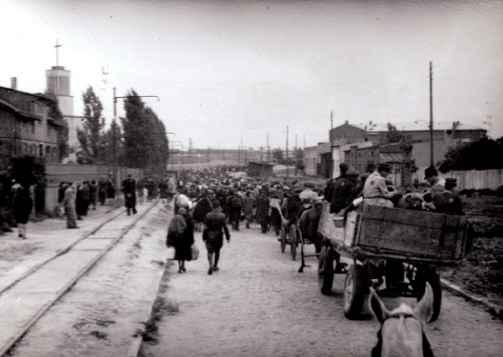 Deportation to Kulmhof – on the way to Radegast railway station, 1942
Deportation to Kulmhof – on the way to Radegast railway station, 1942
Photo: State Archive in Łódź
Scientific analyses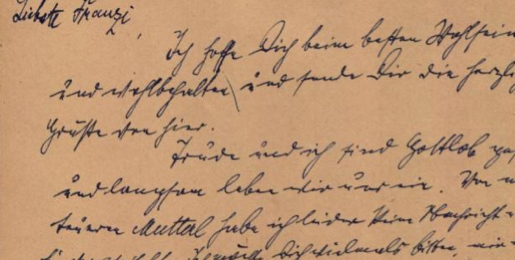 One of around 3,400 postcards from Viennese deportees, which were held back in winter 1941/42 by order of the ghetto administration.
One of around 3,400 postcards from Viennese deportees, which were held back in winter 1941/42 by order of the ghetto administration.
Photo: State Archive in Łódź
The project was divided into three phases. The first phase involved the systemic analysis of 3,400 postcards from the State Archive in Łódź. It was possible to identify the addressors by means of the ‘lists of transports’ for Vienna, held by the Documentation Centre of Austrian Resistance, and to crosscheck spellings of names and correct them, where necessary. The lists of addressees, which had been compiled by staff of the State Archive in Łódź, were checked for errors and incomplete addresses. The handwritten texts of the postcards, some of which were written in Kurrent, were transcribed, legibility permitting. This body of texts is harrowing testimony to the living conditions of deportees in Litzmannstadt ghetto.
It sheds light too on the network of social contacts that existed within the group of inmates from Vienna and between them and Polish Jewesses and Jews. Fated never to reach their destination, the postcards tell of the desperate, often fruitless search for work in the ghetto, of mutual support between inmates, and of mounting anxiety about family members left behind in Vienna. They frequently contain urgent pleas for much-needed financial support from outside.
Together with documents from archives in Austria, Poland, Israel, the USA and Canada, and remarkably extensive photographic material derived from inside the ghetto, these texts form the bases of the second and third phases of the project: a temporary exhibition and a memorial book.
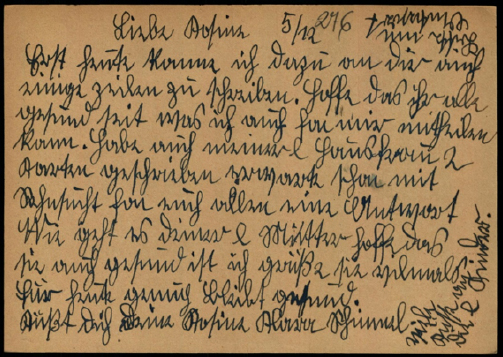 Aloisia Schimmel to Helena Geiger, December 5, 1941
Aloisia Schimmel to Helena Geiger, December 5, 1941
Photo: State Archive in Łódź
Exhibition
The exhibition ‘POST41. Reports from Litzmannstadt Ghetto’ was opened on 30 September 2015 in the Jewish Museum Vienna and can be viewed until 6 March 2016. It will be moved subsequently to Radegast Memorial in Łódź. Further venues are planned in Poland and Austria.
The title of the exhibition relates to the extraordinary number of personal testimonies and documentary reports that capture life and death in the ghetto from various perspectives. The aesthetic colour photographs of Walter Genewein, for instance, mirror the lies and distortions being projected from outside.
The documentation initiated by the Jewish ghetto administration was designed to preserve for posterity a record of the ‘workings’ of the ghetto, and included photographs by Henryk Ross and Mendel Grossman, as well as the Ghetto Chronicle from the archive of the Chief Elder of the Jews. Two intellectuals from Vienna, Alice Chana de Buton and Dr Oskar Rosenfeld, were among the writers who contributed to this chronicle.
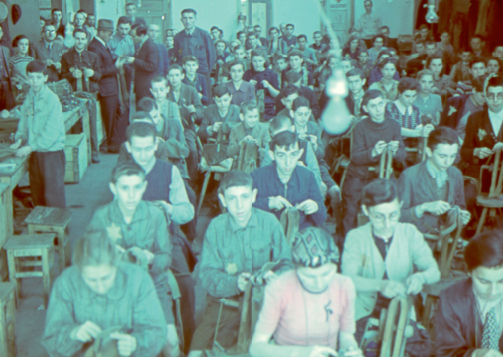 Saddlers‘ workshop in the ghetto
Saddlers‘ workshop in the ghetto
Photo: Walter Genewein, © Jüdisches Museum Frankfurt am Main
![]()
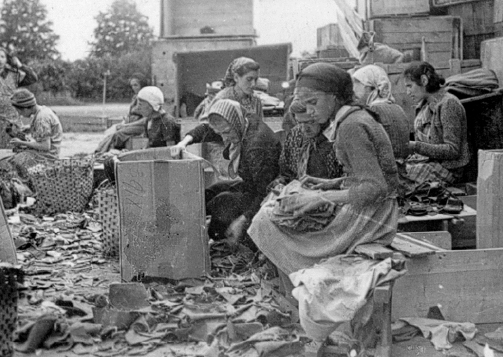 Women working in the bootleg division
Women working in the bootleg division
Photo: State Archive in Łódź![]()
 Alice de Buton an Dr. Rudolf Schalek, 15. Dezember 1941
Alice de Buton an Dr. Rudolf Schalek, 15. Dezember 1941
Photo: State Archive in Łódź
The postcards betray the grief and suffering of those who wrote them, despite the restrictions on certain content imposed by the ghetto administration. And the diaries salvaged from the ghetto reveal the personal, uncensored impressions of inmates in all their immediacy.
Aspangbahnhof 1941. The story of a female friendship by Angelika Brechelmacher and Martina Aichhorn, a video documentary of contemporary witness reports by two Viennese women who were amongst the survivors is embedded in the exhibition. Excerpts from biographical interviews with Hella Fixel and Grete Stern, two Viennese women, then about 20 years old, who managed to survive the ghetto, Auschwitz and forced labour, form another thread in the story. The two women recall what daily life was like in the ghetto and describe their survival strategies, the coincidences that saved their lives, and the help they received from Polish Jewish prisoners.
In keeping with the dictum, ‘Lest we forget’, the exhibition is also aimed at young people and school classes.
Memorial book
The third phase of the project involved the publication of a memorial book under the same title, ‘POST41. Reports from Litzmannstadt Ghetto’. The book appeared in two versions, a German-English version and Polish-English version, and was published by Mandelbaum Verlag to coincide with the opening of the exhibition on 30 September 2015. The book’s contributors include the historian Bertrand Perz (the history of the ghetto), Florian Freund (the ‘Roma camp’), Piotr Zawilski, Director of the State Archive in Łódź (archive material), Hanno Loewy, Director of the Jewish Museum in Hohenems (diaries and the ghetto chronicle), Regina Wonisch (photographic documentation of the ghetto), Hannelore Steinert (postal system in the ghetto), Angelika Brechelmacher (Viennese postcards). The second part of the book presents snapshots of the lives of individual deportees from Vienna, reconstructed from the material, primarily the postcards. The book contains 180 colour photographs.
![]()
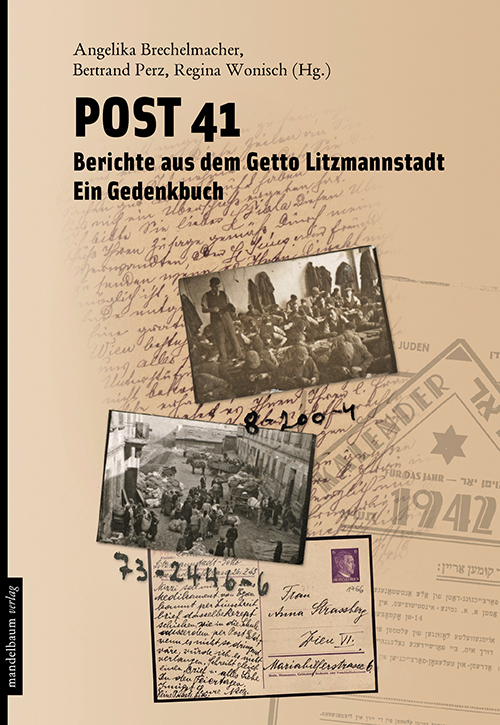
MEMORIAL BOOK: POST 41
Reports from Litzmannstadt Ghetto
Author: Bertrand Perz, Florian Freund, Piotr Zawilski, Hanno Loewy, Regina Wonisch, Hannelore Steinert, Angelika Brechelmacher, Gerhard Baumgartner, Margit Craß
Deportationen vom Wiener Aspangbahnhof. Gepäcksverladung von Deportierten in der Kleinen Sperlgasse in Wien, 1941. Foto: DÖWIm Oktober 1941 werden tausende Jüdinnen und Juden in Wien aufgefordert, sich mit 50 Kilogramm Gepäck pro Person in Wiener Schulen zur Deportation „einzufinden“.![]()
Fünf Transporte mit jeweils 1000 Menschen führen zwischen 15. Oktober und 2. November 1941 vom Wiener Aspangbahnhof nach Łódź, ins Getto Litzmannstadt.Ankunft eines Wiener Transports im Getto Litzmannstadt.Photo: State Archive Łódź
Eine der rund 3.400 Postkarten von Wiener Deportierten, die im Winter 1941/42 auf Befehl der Gettoverwaltung nicht verschickt wurden und im Staatsarchiv von Łódź archiviert sind.
Photo: State Archive Łódź
![]()
(coming soon) Auszüge aus biographischen Interviews mit Hella Fixel und Grete Stern, zweier damals etwa zwanzigjähriger Frauen aus Wien, die das Getto, Auschwitz und Zwangsarbeit überlebt haben, bilden als Filmdokumentation einen weiteren Erzählstrang. Die beiden Frauen erzählen vom Gettoalltag, Überlebensstrategien, lebensrettenden Zufällen und Unterstützung durch polnische jüdische Gefangene.
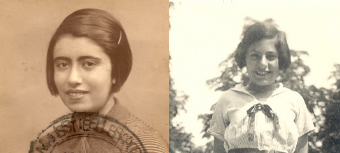
Grete Stern, geb. Feldsberg, und Hella Fixel wurden im Oktober 1941 mit ihren Familien ins Getto Litzmannstadt verschleppt. Fotos: privat
Im Sinne von „Niemals vergessen“ werden auch junge Menschen und Schulklassen mit der Ausstellung angesprochen, ein speziell auf diese Zielgruppe ausgerichtetes Vermittlungsprogramm begleitet sie.![]()
Lead partner: ARGE grenzen erzaehlen, Wien, Austria
Project management: Dr. in Angelika Brechelmacher
EXHIBITION
Curators: Mag.a Regina Wonisch, Angelika Brechelmacher
Curator at JMW: Dan Fischmann
Architecture: Mag. arch. Bernhard Denkinger
Exhibition venues: Jüdisches Museum Wien, Radegast Memorial, Instytut Tolerancji w Łodzi
Duration in Vienna: 30. September 2015 – 6. March 2016, Jewish Museum Vienna
Duration in Łódź: 15. March 2016 – 3. September 2016, Radegast Memorial, Łódź
INVITATION TO THE EXHIBITION (*.pdf)![]()
![]() Projekt partners:
Projekt partners:
- https://grenzenerzaehlen.at – ARGE grenzen erzaehlen, Vienna
- Universität Klagenfurt, Institut für Wissenschaftskommunikation und Hochschulforschung, Austria
zur Projektseite - Forschungszentrum für historische Minderheiten, Wien, Austria
- Archiwum Państwowe w Łodzi – Staatliches Archiv Łódź, Poland
- Instytut Tolerancji w Łodzi – Institut für Toleranz, Łódź, Poland
zur Projektseite - Jüdisches Museum Wien, Austria
zur Projektseite - DÖW Dokumentationsarchiv für den österreichischen Widerstand, Wien, Austria
zur Projektseite - Institut für Konfliktforschung, Wien, Austria
- Hannelore Steinert M.A., Düsseldorf, Germany
- Kanzlei – Internationaler Verein für Wissenschaft und Kultur, Wien, Austria
Sponsored by:
This project has been funded with support from the European Commission.

This publication [communication] reflects the views only of the author, and the Commission cannot be held responsible for any use which may be made of the information contained therein.
- European Commission – EACEA Education, Audiovisual and Culture Executive Agency/ Europe for Citizens Programme/ Action 4 – Active European Remembrance
- Bundeskanzleramt Kultur und Kunst – European Citizen Point
- RD Foundation Vienna Research, Development and Human Rights
- Österreichischer Nationalfonds für die Opfer des Nationalsozialismus
- Zukunftsfonds der Republik Österreich
- Stadt Wien – Kultur
- Stadt Wien – Europa und Internationales
- Wiener Städtische Versicherungs AG
- Österreichisches Kulturforum in Warschau
